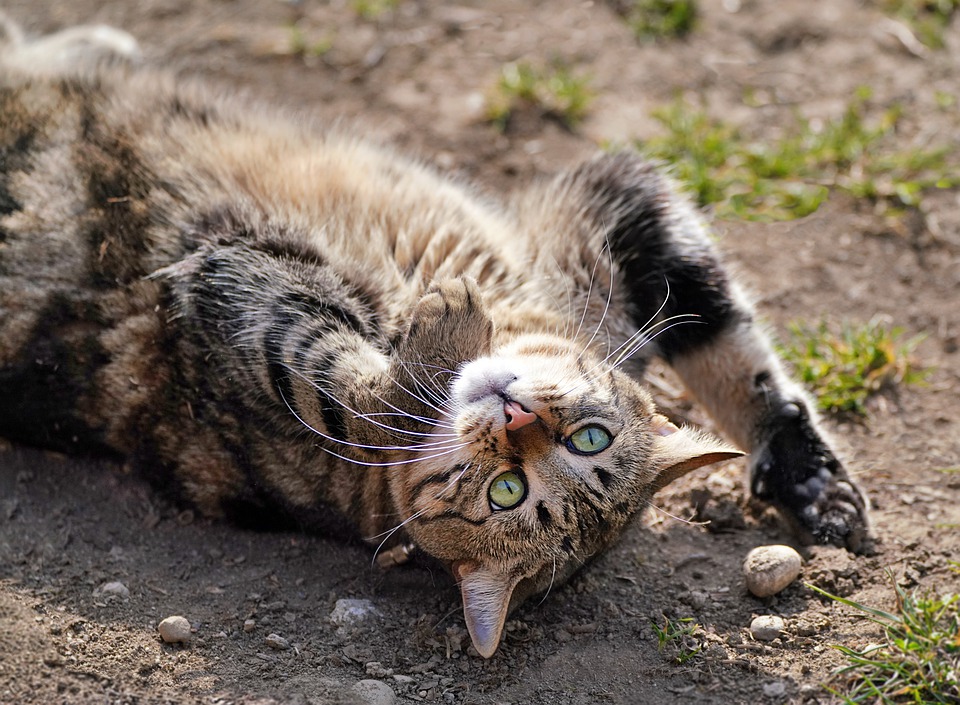Cat-Proofing Your Yard: How to Ensure a Safe Outdoor Environment for Your Feline Friend
As a responsible cat owner, ensuring the safety and well-being of your feline friend is crucial, especially when allowing them to explore the great outdoors. Cat-proofing your yard is essential to create a safe and secure environment for your cat to roam freely while minimizing potential risks. In this article, we will delve into some effective ways to cat-proof your yard, providing peace of mind for both you and your furry companion.
Why Cat-Proofing Your Yard is Important
Allowing your cat to enjoy outdoor time can have numerous benefits, including mental stimulation, exercise, and the opportunity to fulfill their natural instincts. However, an unsupervised cat in an unsecured yard can face various dangers, such as:
1. Traffic hazards: Cats are curious creatures and may dart into the street, putting themselves at risk of being hit by a vehicle.
2. Poisonous plants: Some plants can be toxic to cats if ingested. Without proper cat-proofing, your feline friend may come into contact with harmful flora present in your yard.
3. Predators: Depending on your location, your cat might encounter predators like coyotes, foxes, or even larger dogs that could pose a threat.
4. Chemical exposure: Unsecured access to lawn care products, pesticides, and fertilizers can result in accidental ingestion or exposure, which can be harmful to your cat’s health.
5. Escape routes: Cats are excellent climbers and escape artists. An inadequately secured yard may offer escape routes, leading to your cat getting lost or injured.
Taking the necessary steps to cat-proof your yard mitigates these risks and provides a safe environment for your beloved feline companion to explore.
Effective Ways to Cat-Proof Your Yard
1. Install a Secure Fence
One of the most effective ways to cat-proof your yard is by installing a sturdy and escape-proof fence. Here are some key considerations:
– Height: Ensure the fence is tall enough to prevent your cat from jumping over it. A height of at least 6 feet is recommended.
– Material: Opt for fencing materials that cats cannot easily climb, such as vinyl or wood.
– Mesh or wire: If your fence has gaps or openings, attach a cat-proof mesh or wire to prevent your cat from squeezing through or getting stuck.
2. Create Enclosed Spaces
Providing your cat with enclosed spaces within the yard can offer a sense of security and reduce the risk of escape or encounters with predators. Consider the following options:
– Cat enclosures: Install a cat enclosure or catio, which is a secure and enclosed space attached to your home or freestanding within the yard. This allows your cat to experience the outdoors while remaining protected.
– Secure outdoor cat run: Set up a designated area with a roof or netting to create an enclosed space where your cat can safely enjoy fresh air and sunshine.
3. Remove Toxic Plants
Identify and remove any toxic plants from your yard to prevent accidental ingestion or contact. Some common plants that are toxic to cats include lilies, azaleas, tulips, and daffodils. Consult with a veterinarian or refer to a comprehensive list of toxic plants to ensure your yard is free from potential hazards.
4. Provide Safe Hiding Spots
Cats love to explore and hide in various nooks and crannies. Create safe hiding spots within your yard, such as:
– Cat-friendly bushes: Plant cat-friendly bushes like catnip or catmint, which cats can enjoy while feeling protected.
– Secure hiding structures: Install cat-sized hiding structures, such as small wooden shelters or tunnels, where your cat can retreat and feel safe.
5. Monitor and Eliminate Chemical Hazards
Ensure your yard is free from chemicals that can harm your cat’s health. Take the following precautions:
– Store chemicals securely: Keep all lawn care products, fertilizers, pesticides, and herbicides in a locked shed or storage area where your cat cannot access them.
– Use pet-safe alternatives: Opt for pet-friendly and organic alternatives to chemical-based lawn care products to minimize potential harm to your cat.
FAQs: Frequently Asked Questions
Q: Can I let my cat roam freely without any cat-proofing in my yard?
A: It is not recommended to let cats roam freely in an unsecured yard. Cat-proofing your yard is essential to protect your cat from potential dangers and ensure their safety.
Q: How can I prevent my cat from climbing the fence?
A: To prevent your cat from climbing the fence, consider adding cat-proof mesh or wire to any gaps or openings. Additionally, providing enriching activities and vertical spaces within the yard can discourage climbing.
Q: Are there any non-toxic plants I can add to my yard for my cat to enjoy?
A: Yes, there are several non-toxic plants that cats enjoy. Some examples include catnip, catmint, wheatgrass, and rosemary. Always research and ensure the plants you choose are safe for feline consumption.
Q: Is it necessary to supervise my cat while it is in the yard?
A: Supervising your cat while it is in the yard is highly recommended. Even with proper cat-proofing measures, monitoring your cat’s activities ensures their safety and allows you to intervene if any potential risks arise.
By implementing these cat-proofing measures and taking the necessary precautions, you can create a safe outdoor environment where your feline friend can enjoy the wonders of the natural world without putting their well-being at risk. Remember, the safety and health of your cat should always be a top priority, both indoors and outdoors.








